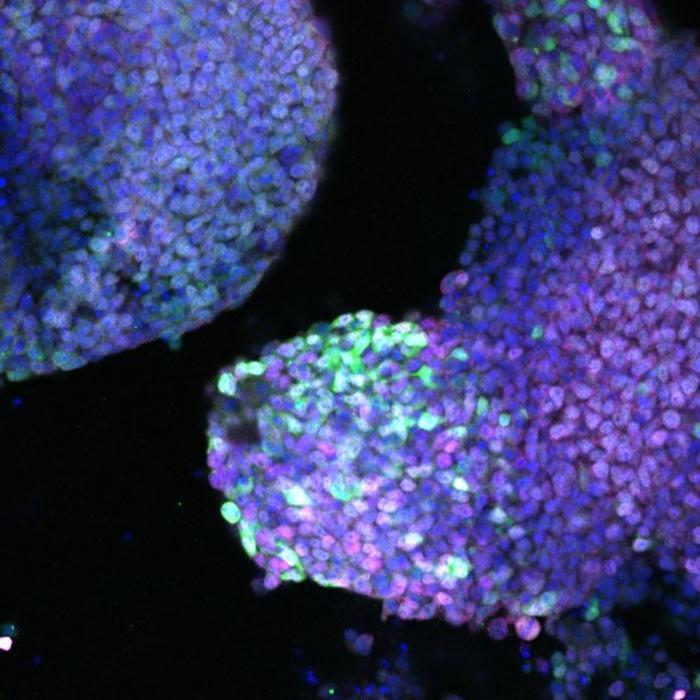They discover a new species of toad in Brazil 0:28
(CNN) --
Some unusual creatures have the innate ability to regenerate their limbs: salamanders, starfish, crabs, lizards and newts.
These extraordinary powers are not shared by most animals, including humans, although scientists have long sought to understand and reproduce them in an attempt to regenerate limbs for millions of amputees, including diabetics and trauma victims.
Now, researchers in the United States said Wednesday that they were able to cause the growth of an amputated leg in a type of African clawed frog (Xenopus laevis), in what they described as a "further step towards the goal of regenerative medicine." .
Malaysian reef sharks are being affected by a mysterious skin disease
The technique used by the team of scientists, based at Harvard University's Wyss Institute and Tufts University, involved applying a mixture of five drugs to the beak-shaped stump of test frogs, sealed with a small silicone dome.
The drug cocktail was only applied for 24 hours, but after 18 months the limb was almost fully functional.
The frogs, which live in water, were able to swim and respond to touch.
They also grew several toes, but not the webs between them.
The research was published Wednesday in the journal Science Advances.
An African Clawed Frog (Xenopus laevis).
He was not involved in the investigation.
The results were "impressive" and "exciting," said James Monaghan, an associate professor in the biology department at Northeastern University.
He was not involved in the investigation.
advertising
"Xenopus frogs fall somewhere between a salamander that regenerates a limb almost perfectly and a mammal that generates a scar after amputation. Adult Xenopus frogs regenerate a spike after amputation, but the spike lacks any pattern as a limb," Monaghan explained.
"This study is significant because it shows that a pattern, albeit not perfect, can be induced in a limb that normally regenerates only one spike," Monaghan said by email.
Activation of cell growth and organization
The team said that the fact that only a short exposure to the drugs initiated a month-long regeneration suggested that frogs, and perhaps other animals, have latent regenerative abilities that can be kicked into gear.
"An immediate translation of this strategy to humans is unlikely because they do not have a regeneration spike as in Xenopus frogs. However, this work is exciting because it shows that endogenous regenerative processes can be enhanced with a brief application of a cocktail of drugs," Monaghan said.
The strategy the team used was based on activating dormant mechanisms in the frog's body rather than trying to "micromanage its growth," said study author Mike Levin, Vannevar Bush Professor of Biology and director of the Frog Discovery Center. Allen at Tufts.
"I think the way to really get regenerative medicine is to tap into the collective intelligence of the cells in the body. They already know how to build all these organs. They did it during embryonic development. All that information is still there," Levin said.
"For me, the goal is to identify triggers, very simple types of stimuli, that turn on the cells and convince them to build whatever it is you want them to build."
The drugs included molecules important for limb development or with anti-inflammatory properties.
Levin said it was the first cocktail they had tried, and it was possible that a different combination of drugs and growth factor would work better.
"It's got the girth and kind of features of a normal limb, some bumps that are becoming toes. It doesn't have all the right terminal structure yet. It doesn't have the long fingers, the webbing... we haven't gotten that far." away; we could have done it if we had let it go longer," he said.
regenerative medicine vs.
prosthesis
The research team used the technique on more than 100 frogs, but the results "were not perfect in all cases."
Levin said the frogs weren't largely identical to lab mice, which could be a factor, or there were inconsistencies in the surgery performed to fix the dome.
The next phase of research would test the technique in mammals such as mice.
Levin and his colleagues have also used frog stem cells to create living, self-replicating robots, which they call xenobots.
The common thread of the two lines of research is the understanding of the signals necessary for cells to organize themselves into complex tissues that form a structure, such as a limb, or an entire organism.
Meet the xenobots: the world's first living self-healing robots created from frog stem cells
Ashley Seifert, an associate professor of biology at the University of Kentucky who studies animal regeneration but was not involved in the research, said advances being made with prosthetics offer more hope than limb regeneration for people with missing limb amputations. due to trauma or diseases such as diabetes.
“Will we ever be able to regenerate a human finger or even a limb? Probably, but it is impossible to predict how long we will have to wait,” says Seifert.
"One step in that direction will be when regenerative biology fully embraces new regenerative models, particularly certain mammalian species. This and comparative studies will help us understand how and why regeneration fails in some contexts and succeeds in others."
AmputeesFrog








